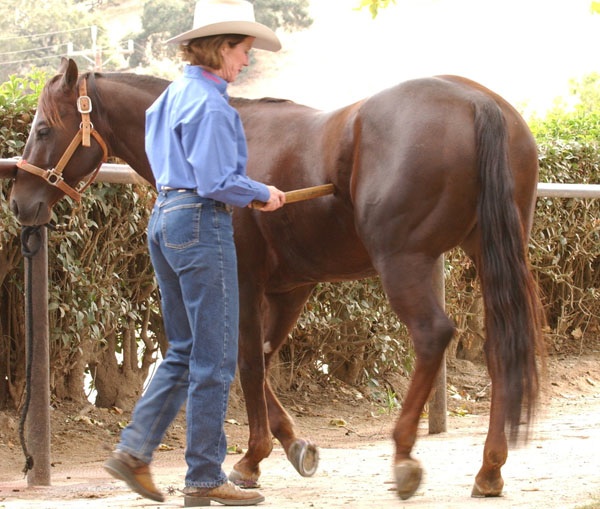Are you the partner your horse wishes you were? Becoming an accomplished, well-rounded horseman requires years of experience. It also takes knowledgeable guidance from “someone who knows.” Sandy Collier—a lifelong horsewoman, longtime H&R contributor, and multiple-world-champion competitor—has a lot of such guidance to share.

One of the key points Sandy makes in all her educational materials is why teaching your horse to yield to pressure is so fundamental. Hint: It’s not just about making him maneuverable.
“It’s one of the most important things you can do to get your horse to honor you,” she explains. “Just as he’d yield to all the more dominant horses in a herd, he must always yield to you when you ask him to.”
Horses naturally move into pressure, not away from it. This means you must educate young or green horses to yield, instead. Sandy has several methods of teaching and reinforcing this yielding, which gives you lateral control of your horse’s body. She starts by establishing a go-sideways willingness from the ground, then moves to mounted work.
You can find three of her techniques here–one to be practiced at the hitching rack, one in hand, and one mounted, at a gate. Each builds on the others.
She demonstrates these and additional lateral exercises in her new DVD, Secrets to Becoming a Great Horse Owner. The program provides the kinds of skills and knowledge that ordinarily takes people years to discover.
In addition to the seven essential skills you need “to do most anything with your horse” (yielding to pressure is one of them), the Cowgirl Hall of Fame member shares a wealth of other indispensible horse-owner know-how. There are tips on loading and hauling. Essential nutritional information. Massage and stretching techniques for your horse. Mounted yoga stretches for you.
Sandy also reveals which are the only four bits you need to own, plus the only four knots you need to know. (There’s much more. To see what else is included, check here.)
If you’re a fan of Sandy’s, you’ll also want to review some of her great articles from the past—on establishing vertical flexion, backing in a circle,tuning up your turns, and other horse-training secrets. Or her comprehensive training book.
It’s all good stuff, and it’ll move you toward your goal of becoming the partner your horse would truly like you to be.






